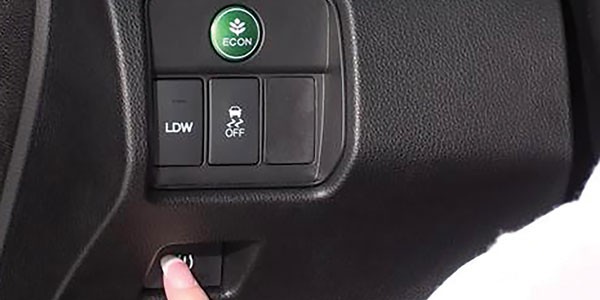Tire Pressure Monitoring Systems (TPMS) are now a standard safety feature in modern vehicles, designed to alert drivers to low tire pressure, enhancing safety and fuel efficiency. When considering the functionality of TPMS, a common question arises, especially for automotive technicians and car enthusiasts: does TPMS operate separately and independently from the OBDII (On-Board Diagnostics II) system? This question is particularly relevant when diagnosing and servicing TPMS issues, especially in vehicles like Hondas, which have specific TPMS system characteristics. This article delves into the relationship between TPMS and OBDII, focusing on whether TPMS can function and be diagnosed without direct OBDII communication, and what factors influence this dependency.
Direct TPMS and OBDII Integration: A Closer Look
Direct TPMS, the more prevalent type, uses pressure sensors inside each tire to directly measure tire pressure. These sensors transmit pressure readings to a central module in the vehicle. In many vehicles, particularly Honda models with direct TPMS, the system is not entirely independent from the OBDII system when it comes to certain functionalities like sensor programming and relearn procedures.
For instance, as highlighted in automotive service practices, Honda’s direct TPMS often necessitates the use of a scan tool or a dedicated TPMS tool that connects to the OBDII port. This connection is crucial for programming new sensor IDs and registering their positions within the vehicle’s TPMS module. Unlike some domestic vehicles where TPMS relearn might be automatic or involve simpler procedures, many Honda direct TPMS systems require this OBDII-linked process. This is not just a matter of convenience; it’s often a mandatory step to ensure the TPMS module correctly recognizes and monitors the new or replaced sensors.
The integration with OBDII in direct TPMS allows for more advanced diagnostics and functionalities. Through the OBDII port, technicians can access the TPMS module to read diagnostic trouble codes (DTCs), which are crucial for pinpointing issues within the TPMS. These codes, once set, are stored in non-volatile memory and typically require an OBDII-connected scan tool to clear. This level of integration means that while the sensors themselves are physically separate from the OBDII system, the TPMS module’s communication, programming, and advanced diagnostics are often intertwined with the OBDII network.
Indirect TPMS: Operating with Relative Independence
In contrast to direct TPMS, indirect TPMS operates more independently from dedicated TPMS sensors and, consequently, has a different relationship with the OBDII system regarding tire pressure monitoring. Indirect TPMS relies on the vehicle’s Anti-lock Braking System (ABS) wheel speed sensors. It monitors tire pressure by detecting changes in wheel speed. A tire with low pressure will have a slightly smaller diameter, causing it to rotate at a different speed compared to other tires. The ABS system detects these subtle differences and triggers a low tire pressure warning.
Vehicles equipped with indirect TPMS, such as certain Honda Civic and Accord models, do not require sensor programming or OBDII-linked TPMS tools for basic operation and calibration. Calibration in indirect systems is typically initiated through a reset button or the vehicle’s information center, often involving a driving period at a specific speed range to allow the system to learn and establish a baseline for tire pressures. This calibration process is independent of the OBDII port in terms of data acquisition for tire pressure, as it leverages the existing ABS data.
However, even with indirect TPMS, the OBDII system still plays a role in diagnostics. If an issue arises within the indirect TPMS system, such as a malfunction in the ABS system affecting its tire pressure monitoring capability, diagnostic codes will likely be generated and accessible through the OBDII port. Therefore, while the day-to-day operation of indirect TPMS for pressure detection is independent of OBDII, the diagnostic aspect often remains connected to the broader OBDII system for fault identification and resolution.
Honda TPMS Specifics and the OBDII Connection
Honda vehicles illustrate the nuances of TPMS and OBDII integration particularly well. As mentioned, Honda’s direct TPMS often requires OBDII tools for sensor programming and relearn. Moreover, Honda specifies a “magic number” of 28 mph for direct TPMS systems. Once a Honda vehicle with direct TPMS reaches 28 mph for at least a minute, it validates sensor signals, IDs, and pressures. This speed detection, however, is not sensor-based but rather processed through the serial data bus and the TPMS module, highlighting the system’s internal communication network, which can be accessed via OBDII for deeper diagnostics.
For indirect Honda TPMS systems, while calibration is OBDII-independent in terms of direct data input, the overall system’s health and any faults are still monitored and can be diagnosed through the OBDII system. The calibration process for Honda indirect TPMS, involving driving at 40-60 mph for 20 minutes after initiating the reset, is a self-contained procedure, but any underlying issues affecting the system’s functionality could still generate OBDII readable codes.
Conclusion: Interdependence and Independence in TPMS and OBDII
In conclusion, the relationship between TPMS and OBDII is not a simple case of complete separation or full integration. Direct TPMS, especially in makes like Honda, often relies on OBDII for crucial service procedures like sensor programming and advanced diagnostics. While the pressure sensing is independent of OBDII in real-time monitoring, the setup, maintenance, and in-depth troubleshooting are frequently OBDII-dependent.
Indirect TPMS, on the other hand, operates more independently for tire pressure detection, utilizing the ABS system. However, even indirect systems are not entirely divorced from OBDII, as the OBDII system remains the central access point for overall vehicle diagnostics, including issues that might arise within the indirect TPMS or its supporting systems like ABS.
Therefore, to answer the initial question: TPMS operation is partially independent and partially dependent on OBDII. The extent of dependence varies based on the TPMS type (direct vs. indirect), vehicle manufacturer, and specific functionalities being considered (real-time monitoring vs. programming and diagnostics). For comprehensive TPMS service and diagnostics, particularly in vehicles with direct TPMS, understanding and utilizing the OBDII interface is often essential.

